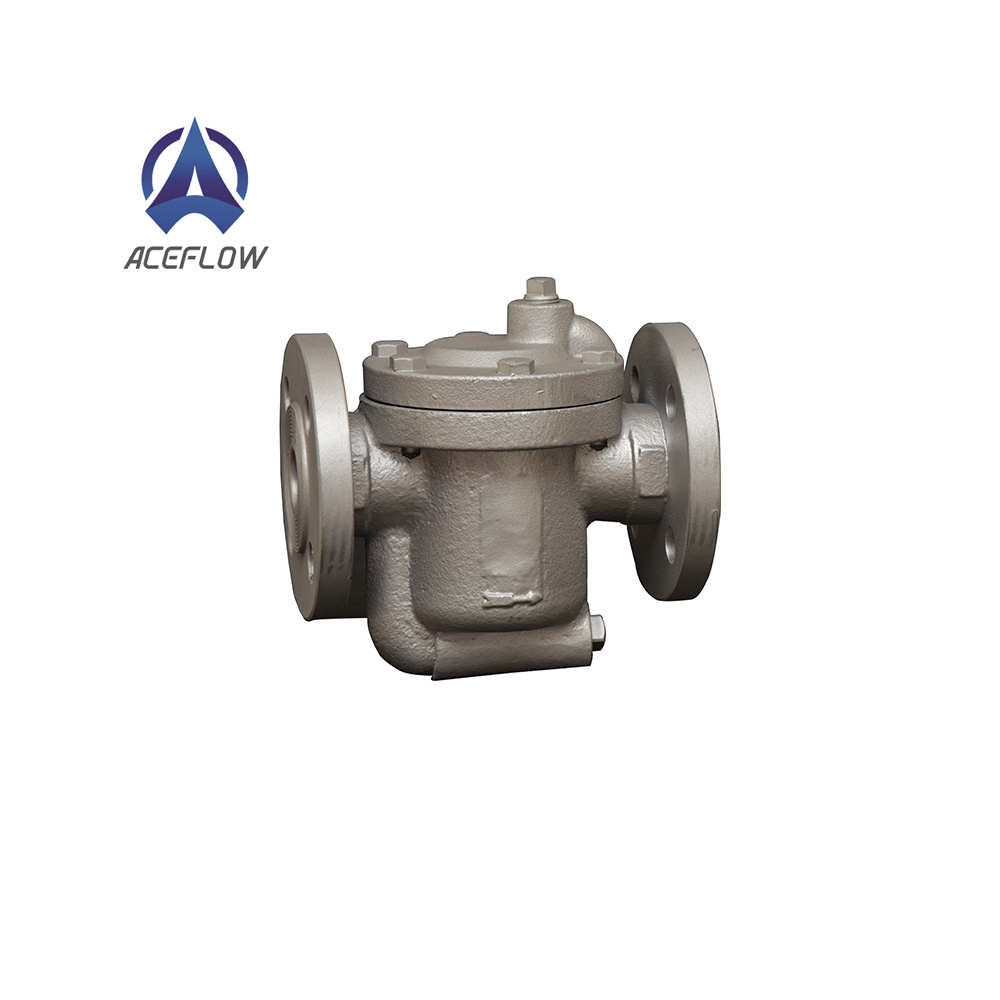What is the principle and function of steam trap
The basic function of the steam trap is to discharge the condensate, air and carbon dioxide gas in the steam system as soon as possible, while automatically preventing steam leakage. There are many kinds of traps, each with different performance. When selecting steam trap, first select its characteristics to meet the reasonable operation of steam heating equipment, and then consider other objective conditions, so as to select the steam trap you need correctly and effectively.
Working principle of steam trap: steam trap is installed between steam heating equipment and condensate return header. When it is opened, the bucket is at the bottom and the valve is fully opened. After entering the drain valve, the condensed water flows to the bottom of the bucket, fills the valve body and completely submerges the bucket body. The condensate is then discharged to the return header through a fully open valve. Steam also enters the drain valve from the bottom of the bucket and occupies the top of the bucket to generate buoyancy. Slowly raise the cylinder barrel and gradually move the lever to the valve seat until the valve is fully closed. Air and carbon dioxide gas are collected at the top of the steam trap through the vent hole of the can body, and the steam discharged from the vent will be condensed due to the heat dissipation of the steam trap. When the incoming condensate starts to fill the bucket, the bucket starts to pull on the lever. As the condensate water level rises, the force generated increases until the pressure difference can be overcome and the valve can be opened.

When the drain valve starts to open, the differential pressure acting on the valve disc will decrease. The barrel will drop rapidly to fully open the valve. First discharge the non-condensable gas accumulated on the top of the drain valve, and then discharge the condensate. When the water flows out of the bucket, it drives the dirt out of the trap. At the same time as the condensate is discharged, the steam begins to enter the steam trap again, and a new cycle begins again.
Structural form of steam trap: steam trap plays a role of steam blocking and drainage in the steam heating system. Selecting a suitable steam trap can make the steam heating equipment achieve higher working efficiency. In order to achieve the desired effect, it is necessary to understand the working performance and characteristics of various types of steam traps. The steam trap should be able to "identify" steam and condensate, so as to prevent steam and drain water. The "identification" of steam and condensate is based on three principles: density difference, temperature difference and phase change. Therefore, three types of traps are manufactured according to three principles: mechanical, thermal static and thermal dynamic.
As long as the steam passes through, selecting and installing a suitable drain valve will not cause freezing. However, if the steam is cut off, the steam condensate will form a vacuum in the heat exchanger or the accompanying pipe, which will prevent the condensate from discharging freely from the system before freezing occurs. Therefore, a vacuum circuit breaker should be installed between the exhaust equipment and the steam trap. If gravity discharge is not used from the drain valve to the return pipe, the drain valve and the discharge pipe shall be discharged manually or automatically by the discharge pipe with anti-freezing measures. In addition, when several steam traps are installed in the steam trap station together, keeping the temperature of the steam trap can prevent icing.
Related information








